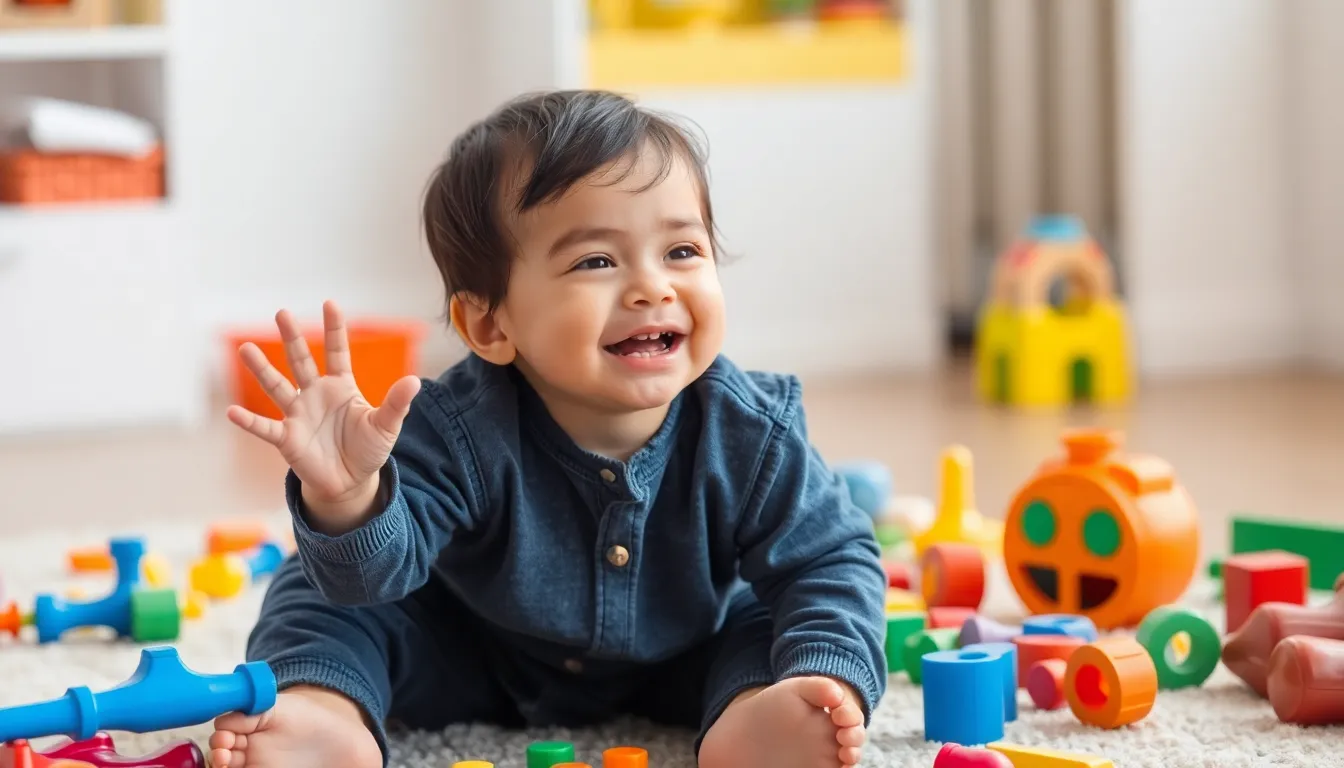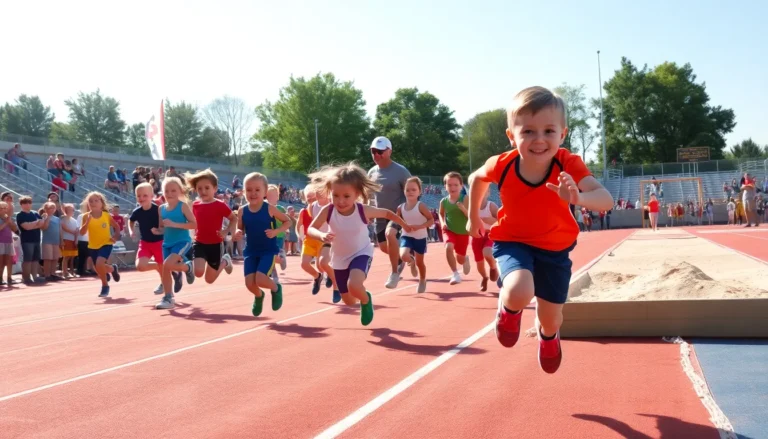Table of Contents
ToggleWatching a child grow and develop is one of life’s most fascinating experiences. One of the most anticipated milestones for parents is when their little one starts talking. This moment not only marks a significant leap in communication but also opens the door to a world of expression and connection.
Typically, kids begin to utter their first words around the age of one. However, the journey to verbal communication varies widely among children. Factors like environment, social interactions, and individual development play crucial roles in this process. Understanding when to expect these milestones can help parents support their child’s language development effectively.
Overview of Language Development
Language development occurs in stages, starting from birth and continuing throughout early childhood. Infants begin by cooing at around two months, gradually progressing to babbling between six to nine months. By their first birthday, they typically say their first intelligible words, with many children expanding their vocabulary rapidly in the following months.
Factors influencing language development include environment, social interactions, and individual differences. Engaging with caregivers through talking, singing, and reading promotes language acquisition. Children exposed to rich linguistic environments often develop advanced language skills earlier than peers in less stimulating settings.
By 18 months, many toddlers say around 50 words and can combine words into simple phrases by age two. By three years, they typically use three- to five-word sentences and can make themselves understood in conversations. The development continues, reaching significant milestones such as understanding concepts, asking questions, and engaging in storytelling between ages four and five.
Tracking these milestones can help identify potential delays in language development. Early intervention can provide valuable support if a child shows signs of delay or difficulty. Understanding this timeline is crucial for parents in fostering an encouraging environment for language growth.
Milestones in Early Communication

Language development starts at birth with various milestones marking a child’s progress toward verbal communication. Parents play a crucial role in supporting this development, recognizing key stages in pre-verbal and verbal communication.
Pre-verbal Communication
Pre-verbal communication occurs before children speak intelligibly. Infants typically engage in cooing by two months, producing soft vowel sounds. By six to nine months, they transition to babbling, combining consonant and vowel sounds. This phase includes experimenting with pitch and tone. Infants also utilize non-verbal cues such as gestures and facial expressions to convey meaning and emotions. Parents can stimulate this communication by responding to these cues, facilitating a richer dialogue.
First Words
Most children articulate their first meaningful words around their first birthday. Common first words include “mama” and “dada,” often based on their immediate social environment. By 18 months, children usually know around 50 words and begin to combine them into simple phrases, such as “more juice.” As they approach the age of two, vocabulary growth accelerates, with children often producing two- to three-word sentences. This early stage prepares them for more complex language skills as they engage in conversations and express their thoughts more clearly.
Factors Influencing Speech Development
Several factors significantly influence a child’s speech development, including genetics, family background, environment, and social interaction. Each element plays a critical role in determining when and how effectively a child communicates.
Genetics and Family Background
Genetics affects language acquisition by contributing to cognitive abilities and speech-related skills. Children of parents who are articulate or have a strong linguistic background often show advanced verbal skills. Studies indicate that children with a family history of language delays or disorders could experience similar challenges. Sibling interactions also play a crucial role, as older siblings often model language usage and provide stimulation.
Environment and Social Interaction
The surrounding environment greatly impacts speech development. Children exposed to rich linguistic environments, filled with conversation, reading, and singing, develop language skills more rapidly. Social interactions with caregivers, peers, and family members encourage practice and the exploration of language. Engaging in back-and-forth dialogue helps children learn to use words effectively and enhances their understanding of communication. A nurturing and stimulating environment fosters confidence in speaking and primes children for successful language acquisition.
Variability in Speech Development
Speech development varies widely among children due to numerous influencing factors. Understanding typical age ranges and knowing when to seek professional help can guide parents in supporting their child’s language journey.
Typical Age Ranges
Children generally achieve key language milestones within specific age ranges, but individual differences exist.
- 2 months: Infants coo and make gurgling sounds.
- 6 to 9 months: Children start babbling, producing repetitive consonant-vowel combinations.
- 12 months: Most children say their first meaningful words, such as “mama” or “dada.”
- 18 months: Vocabulary typically expands to about 50 words.
- 24 months: Many children begin combining words into two-word phrases, like “more juice.”
- 3 years: Children commonly use three- to five-word sentences, often engaging in simple conversations with adults.
Monitoring these milestones helps gauge a child’s progress and identify potential delays.
When to Seek Professional Help
Parents should consider seeking professional help if they observe any of the following signs:
- No babbling by 9 months: Indicates a possible delay in verbal exploration.
- No meaningful words by 12 months: Marks a significant delay in language acquisition.
- Limited vocabulary at 18 months: Fewer than 50 words may signal a concern.
- Unintelligible speech by 3 years: Speech should be understandable to familiar listeners.
- Lack of two-word combinations by 24 months: Missing this milestone can indicate delays in language development.
Early intervention is crucial and can significantly enhance a child’s communication skills. Parents should feel empowered to consult speech-language pathologists if they have concerns about their child’s speech development.
Understanding when kids start talking is essential for parents as it helps them support their child’s language development. Each child’s journey is unique and influenced by various factors like environment and social interactions. Recognizing the key milestones in speech development enables parents to foster a nurturing atmosphere that encourages communication.
Being proactive in engaging with children through talking, reading, and singing can significantly enhance their verbal skills. If parents notice any signs of delays, seeking professional guidance can make a difference. Ultimately, being informed and attentive to these milestones can empower parents to nurture their child’s communication abilities effectively.








